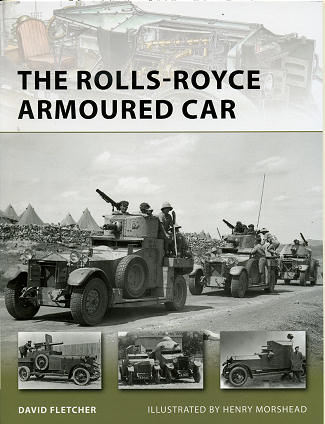 Today,
the armored car is a primary reconnaissance and patrol vehicle, many of which
are designed to withstand land mines and rather heavy machine gun fire. They are
also incredibly expensive. One of the more widely used, though not really built
in large numbers, was the Rolls-Royce armored car of 1914. The original car was
simply a vehicle that was built in theater on a Rolls-Royce chassis when the
RNAS was based in Flanders early in the war. It proved to be reliable, something
that seemed to be missed by most other builders. The design impressed the then
First Lord of the Admiralty, Winston Churchill, and so about 100 of them were
built.
Today,
the armored car is a primary reconnaissance and patrol vehicle, many of which
are designed to withstand land mines and rather heavy machine gun fire. They are
also incredibly expensive. One of the more widely used, though not really built
in large numbers, was the Rolls-Royce armored car of 1914. The original car was
simply a vehicle that was built in theater on a Rolls-Royce chassis when the
RNAS was based in Flanders early in the war. It proved to be reliable, something
that seemed to be missed by most other builders. The design impressed the then
First Lord of the Admiralty, Winston Churchill, and so about 100 of them were
built.
They were relatively fast and perfect for mobile
reconnaissance, however, the war turned out not to be the fluid conflict that
was initially expected so the 100 or so built were not very useful in combat and
generally used to haul around folks. As the book states, they spent most of the
next four years searching the world for a war. Turned over to the Army in 1915,
they were sent to Gallipoli where again, they were less than impressive.
Probably the area where they were of use was in Palestine with Lawrence of
Arabia, where their armor was useful against the rifles and machine guns of the
Turks.
Despite their less than sterling service during WWI,
they were upgraded with a 1920 and 1924 'pattern' vehicle that found a lot of
usefulness with the Yeomanry back in the UK and in Egypt/Palestine area as well
as in the Northwest Frontier of India. These vehicles were frequently modified
for local conditions, and some were even privately built. Thanks to the great
need for the chassis by civilian customers, the vehicles were, for the time,
very expensive, and that kept more from being made.
Many were provided to the Irish after the civil war and
were used until a lack of tires/wheels during WWII put them out of commission.
Those in Egypt were used early in WWII against the Italians with some modicum of
success, though most of them also succumbed to the harshness of war.
In this book, the author David Fletcher, tells us the
full story of the Rolls armored cars from its inception as a private experiment
until the end of its use some thirty years later. All of the various
modifications to the vehicle are covered, including not only factory upgrades,
but those done in the field. This includes several unauthorized vehicles built
on available Rolls chassis.
This is all superbly illustrated by period photos of the
vehicles and personalities involved in the story. This is further enhanced by artwork of illustrator
Henry Morshead, making for a very interesting read and an excellent reference
for the modeler. I had a lot of fun reading this one and it
is one that I can
readily recommend to you.
April 2012
For more on the complete line of Osprey books,
visit www.ospreypublishing.com. In the US, it is
Osprey Direct at 44-02 23rd St, Suite 219, Long Island City, NY 11101., where you can
get a catalogue of available books.
If you would like your product reviewed fairly and fairly quickly, please contact the editor or see other details in the Note to
Contributors.
 Today,
the armored car is a primary reconnaissance and patrol vehicle, many of which
are designed to withstand land mines and rather heavy machine gun fire. They are
also incredibly expensive. One of the more widely used, though not really built
in large numbers, was the Rolls-Royce armored car of 1914. The original car was
simply a vehicle that was built in theater on a Rolls-Royce chassis when the
RNAS was based in Flanders early in the war. It proved to be reliable, something
that seemed to be missed by most other builders. The design impressed the then
First Lord of the Admiralty, Winston Churchill, and so about 100 of them were
built.
Today,
the armored car is a primary reconnaissance and patrol vehicle, many of which
are designed to withstand land mines and rather heavy machine gun fire. They are
also incredibly expensive. One of the more widely used, though not really built
in large numbers, was the Rolls-Royce armored car of 1914. The original car was
simply a vehicle that was built in theater on a Rolls-Royce chassis when the
RNAS was based in Flanders early in the war. It proved to be reliable, something
that seemed to be missed by most other builders. The design impressed the then
First Lord of the Admiralty, Winston Churchill, and so about 100 of them were
built.